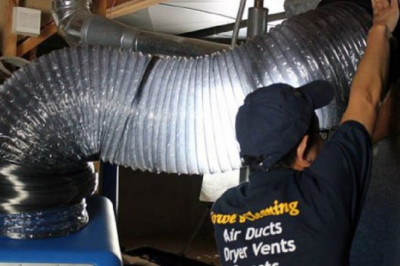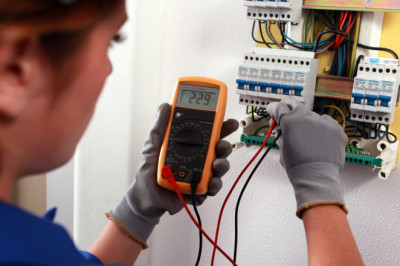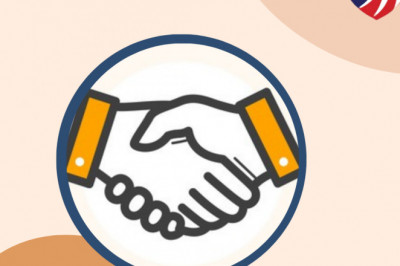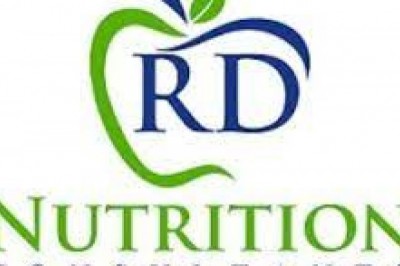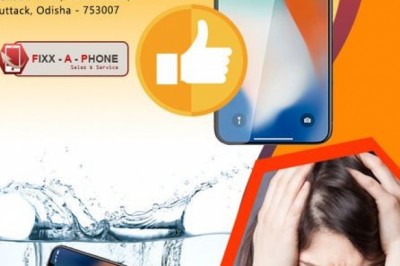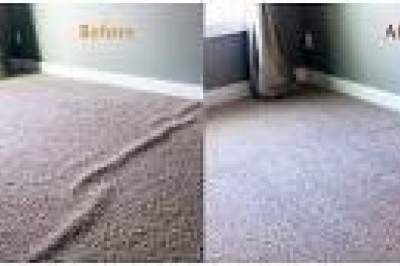views
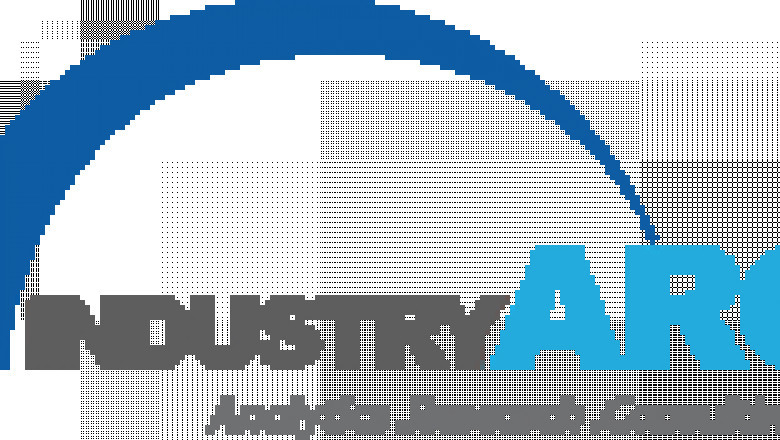
Ultraviolet coatings market size is forecast to reach US$7.8 billion by 2026, after growing at a CAGR of 8.7% during 2021-2026. The main factors driving the growth of this industry are the flourishing construction industry as well as the awareness of eco-friendly products. Another important reason is its superior performance when compared to other coatings. In the preparation of Ultraviolet (UV) cured coating a formulation of several ingredients is hardened by means of ultraviolet radiation, which forms free radicals which in turn starts the light induced polymerisation process of the reactive double bonds in the coating formulation. This is a kind of surface treatment that can be added to various substrates such as plastic, paper, glass, wood, metals and many others. The ongoing trend is using 100 percent solids UV which are a combination of monomers, oligomers, and photoinitiators that require no carrier solvents to flash as part of the drying and curing process. UV coatings are known for their superior properties – glossy finish, high clarity, quick dry, abrasion resistant, versatility and quick drying. Owing to these characteristics they find new applications across several industries. UV coatings are being utilized in the coating industry because they offer lower operating costs, enhanced capabilities and environmental benefits of safer workplace environment and no hazardous materials. With the growing awareness about UV Coatings, the market for this industry during the forecast period looks brighter.
Ultraviolet (UV) Coatings Market COVID-19 Impact
Due to the COVID-19 pandemic the sales of UV coatings dropped in the first quarter of 2020 due to disruptions in the supply chains. But slowly and steadily the demand for UV coatings began increasing. As people were confined to their houses, they focused more on DIY projects and as a result, the demand for floors, furniture and various decorative panels helped the market recover. According to a study by Harvard University researchers, in the US spending on home improvements and repairs grew more than 3%, to nearly $420 billion, as households modified living spaces for work, school, and leisure in response to the COVID-19 pandemic. It was reported that almost 60% of the homeowners had started DIY or home improvement projects. Also, during the lockdown, many people purchased new homes, which in itself calls for home improvement projects. This contributed to improve the UV coatings market.
Request for Sample Report @ https://www.industryarc.com/pdfdownload.php?id=11732
Report Price: $4500 (Single User License)
Ultraviolet (UV) Coatings Market Segment Analysis – By Composition
The monomers segment held the largest share of more than 40% in the UV coatings market in 2020. Monomers are low molecular weight substances which reduce the viscosity of the formulation. They are also non-flammable materials with low odor. Monomers are esters of acrylic acid and simple monofunctional/multifunctional polyols. The functionality of the monomer has a very significant effect on properties of the cured coating. Monomers are usually selected based on acrylic functional groups attached to them. Mixtures of monomers typically are used to optimize the performance of a formulation. All these factors drive the monomer segment in UV coatings market during the forecast period.
Ultraviolet (UV) Coatings Market Segment Analysis – By Resin Type
A large number of UV-curable resins are commercially available including polyesters, epoxies, urethanes, silicones and acrylates. The majority of these resins are free-radical curing acrylic-functionalized oligomers which usually cure in a matter of seconds. Acrylic resins are hydrolysis resistant, weather resistant and glossy. They also have high color ability for coating solutions. The main application of acrylic coatings is found in the construction industry, for high-finishing in rods, bridges, floors, decks, and others. Other applications of acrylic-based coatings include marine vessels & structures, machinery, and other metal products. These resins are used in water-based coatings to reduce VOC emission. UV resins have become very popular resin systems due to their high productivity, ease of application, and low impact on the environment. They are often employed when fast drying and curing is needed. Based on all these factors the acrylic segment is expected to show significant growth of 8.5% during the forecast period.
Ultraviolet (UV) Coatings Market Segment Analysis – By Formulation
The water-based coatings segment held the largest share of more 38% in the UV coatings market in 2020. The main reason for this is that water-based UV coatings can be cleaned with water eliminating the need for expensive solvents. The zero flammability attribute of water-based coatings also adds to its popularity. The market prospects of coating technologies are reflecting the environmental concerns and hence are governed by regulations. According to the regulations, the market share of solvent-based coatings is significantly declining and the share of alternative environmentally safe especially water-based coatings is increasing steadily. This trend is likely to continue during the forecast period. In the automotive industry, water-based coatings are gaining importance. UV coatings are used as filler primers as they cure rapidly. Owing to their physical drying, water-based UV coatings also allow to coat 3D objects. The Decopaint directive in Europe and legal requirements in North America have boosted the market for water-based coatings.
Ultraviolet (UV) Coatings Market Segment Analysis – By Substrate
Ultra violet (UV) coatings are used for coating on various surfaces (wood, metals, plastic, paper and others). Out of these, the market for coating on wood has the highest share. Coatings need to have a fast-curing rate as well, so that while in the process of curing they do not get absorbed into the wood. This is why UV coatings are preferred for coatings on wood. UV coating compositions are first applied on wooden surface and then exposed to UV radiation. The photoinitiator dissociates to form free radicals, which initiate the light induced polymerization leading to the formation of a polymeric crosslinked network on the wooden surface. The UV coatings on wood segment is at the forefront with the highest consumption of UV coatings worldwide owing to the rapidly increasing applications of these coatings in the wood & furniture industry. With the pandemic, work from home and online classes have become the new norm so people started redesigning their houses, there has been a steady rise in demand for furniture (chairs, laptop tables, study tables, etc.). This in turn has fueled the demand for this market. For instance, Blueport Commerce, a leading platform for big-ticket retailers in North America, announced a dramatic increase in online furniture sales since the onset of the COVID-19. From April-June 2020, furniture retailers running websites on the Blueport platform increased online sales an average of 317% compared to the same period in 2019.
Ultraviolet (UV) Coatings Market Segment Analysis – By End-Use Industry
The construction segment held the largest share in the UV coatings market in 2020 and is growing at a CAGR of 7.9% during 2021-2026. Concrete, used in construction, is a porous material that can degrade over time when exposed to weather, foot traffic and other normal wear and tear. UV coatings seal concrete and ensure its lasting structural integrity and aesthetic appeal. It offers protection to concrete without the long drying times of conventional coating methods. Coating is particularly useful for high-usage concrete applications such as floors. Coated floors need periodic re-applications to maintain quality. The short drying times of UV coating for concrete means less downtime whether at the beginning of the construction or during active use. In addition to being faster than conventional methods, UV coating is also more environmentally friendly. It reduces or eliminates the need for solvents. This also means it is safer for people during the curing process. According to UNCTAD's World Investment Report, in India robust investment in construction bolstered FDI inflows. Cross-border mergers and acquisitions surged 83% to US$27 billion, with major deals involving infrastructure. This in turn fuels the growth of the UV coatings market over the forecast period. The use of UV coatings has increased significantly over the last decade in the electronics industry for mobile phones, laptops, and game console coatings. The main reason for this growth is the excellent performance of photoinitiators in UV coatings, especially good wear resistance, outdoor durability, and resistance against household chemicals. This factor moderately boosts the growth of the market during the forecast period.
Ultraviolet (UV) Coatings Market Segment Analysis – By Geography
Asia-Pacific region held the largest share in the UV coatings market in 2020 up to 42%, owing to the construction industries in the region. Another factor contributing to the growth of the UV coatings market in this area is the automotive industry. The economies of Japan, India, China and Malaysia are witnessing rapid industrialization and urbanization. In India the construction sector drives the economy. According to the Indian Department for Promotion of Industry and Internal Trade (DPIIT), FDIs in the construction development sector and construction activities stood at US$ 25.93 billion and US$ 23.99 billion respectively between April 2000 and December 2020. The APAC region has continued to grow, even in the face of the pandemic. China has become the world’s largest coatings market in terms of volume. All these growth trends are expected to continue in the forecast period.
Ultraviolet (UV) Coatings Market Drivers
Increasing Environmental Awareness
Businesses today must cope with increased regulations associated with air emissions, waste disposal, and safety and health. There are two primary advantages of UV coatings technology that have led to the recognition of the technology as “green.” First, most UV coatings formulations do not contain significant quantities of volatile organic compounds (VOCs) or hazardous air pollutants (HAPs). Second, the energy to dry a UV coating is much lower than that of a conventional solvent or even water-based coating. Since much of the energy produced globally is derived from fossil fuels, reduction in energy consumption is equivalent to greenhouse gas reductions. With new efforts to reduce greenhouse gas emissions on the immediate horizon, businesses can rely on UV coatings as a key tool to help reduce their environmental footprint by reducing both air pollution and their overall greenhouse gas emissions. This positively impacts the market during the forecast period.
Smart Coatings
A host of research activities in this market are aimed at generating new and improved functions. Nanotechnology plays an important role in this. In the case of self-healing coatings, usually filled nanocapsules are added. If the coating becomes physically compromised or damaged these nanocapsules release polymerizable substances into the fillers that self-repair. During the pandemic, there has been a demand for coatings with biocidal applications. Research is ongoing to make the coatings resistant toa wide range of microbes. All these factors can significantly boost the growth of the market.
Inquiry Before Buying @ https://www.industryarc.com/reports/request-quote?id=11732
Ultraviolet (UV) Coatings Market Challenges
Higher Price
UV coatings are expensive when compared to other coating methods available. So lower priced traditional coating methods are used instead. But UV coating is more efficient and consumes less energy. It doesn’t expose the substrate to high temperature and therefore allows a high degree on crosslinking on temperature sensitive products. The process is nearly instantaneous also the equipment requires less space. UV coatings are the highly priced green coatings in the market till date costing more than $18000 per ton. This factor may dampen the growth of the market.
Ultraviolet (UV) coatings Market Landscape
Technology launches, acquisitions, and R&D activities are key strategies adopted by players in the ultraviolet (UV) coatings market. UV coatings market top companies are Dow Chemical Company, BASF SE, Akzonobel N.V., DIC Corporation, PPG Industries Inc., Dymax Corporation, Royal DSM N.V., Centexbel, Actega Coatings & Sealants, Eternal Chemical Co. Ltd., Axalta Coatings Systems, The Valspar Corporation, Ashland Inc., Croda, Brilliant Coatings Solutions and Soltech Ltd.
Acquisitions/Technology Launches
In June 2021 PPG Industries Inc. acquired Tikkurila, a Leading Nordic Paint and Coatings Company. Tikkurila’s main line includes environmentally friendly decorative products and high-quality industrial coatings.
In 2020 The Protech Group acquired the coatings division of ACG Industrie (France) and the liquid coatings manufacturer Winslow Browning Inc. (USA).
Key Takeaways
Asia-Pacific dominates the UV coatings market, owing to the flourishing construction industry in the region. Japan invested approximately $15 billion for the Tokyo Olympics which will be held in 2021.
UV coatings are eco-friendly and do not release Volatile Organic Compounds (VOC). This makes them preferred choice of coatings from an environmental standpoint.
The major opportunity for this market is to innovate and research new products such as coatings that are antibacterial/antiviral as there will be an upsurge in the demand of such coatings during the forecast period.
Related Reports:
A. Green Coatings Market
https://www.industryarc.com/Report/11722/green-coatings-market.html
B. Decorative Coating Market
https://www.industryarc.com/Report/11716/decorative-coating-market.html
For more Chemicals and Materials Market related reports, please click here



